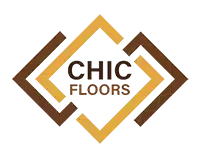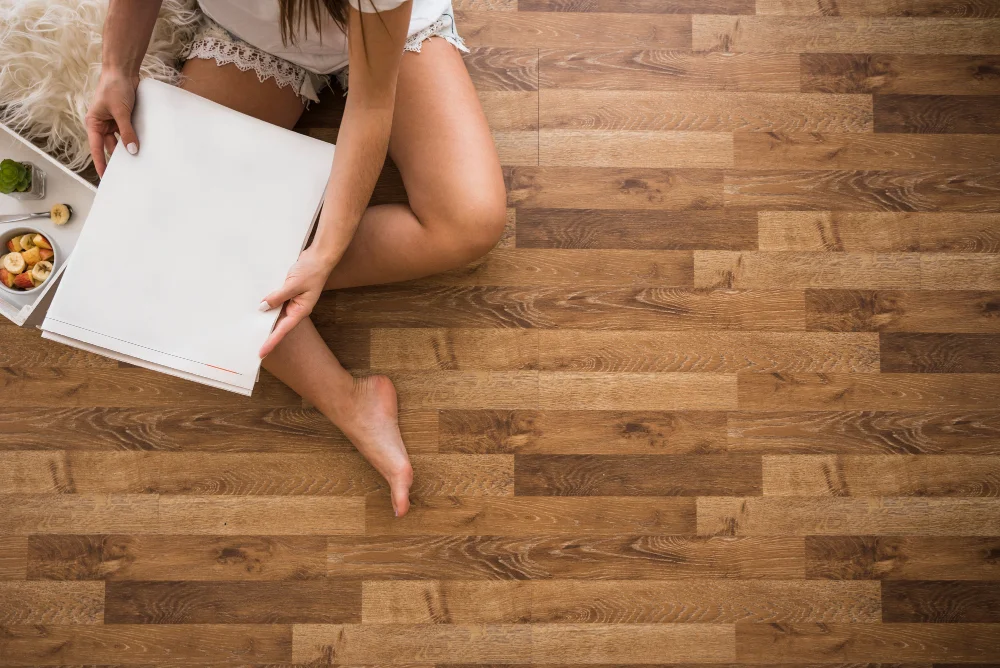Picture your toddler turning your designer shoes into toy cars, scuffing them across the wooden floor. With engineered hardwood, you stay calm.
Engineered hardwood balances the timeless appeal of real wood with the robust nature of plywood sheets. Blending beauty with practicality, this flooring plan is an engineering feat—far more than just another option in the ever-growing list of flooring solutions. When comparing Engineered Wood Flooring vs. Solid Hardwood Flooring, engineered hardwood stands out for its superior durability and moisture resistance, making it ideal for modern homes.
Consider this if you’re a numbers guy: the global market of this flooring plan was worth $8.84 billion in 2023 and is projected to hit $13.74 billion by 2032. This represents an impressive 5.02% annual CAGR.
Ready to explore engineered hardwood further? Let us delve into its unique composition, features and benefits (even drawbacks) to help you judge whether it is the flooring plan you were looking for.
What is Engineered Hardwood Flooring?
Engineered hardwood represents a modern, composite flooring solution. At its core multiple layers of plywood or high-density fiberboard (HDF) are bonded together with a crowning surface layer of real hardwood veneer. These layers are interlocked in a cross-grain pattern, to reinforce real wood with high tensile strength and durability.
Unlike solid wood, engineered hardwood stands up well to moisture. This makes it suitable for humid places like kitchens and basements, where solid hardwood would warp or split. A special factory-applied finish adds extra protection against water damage.
You can easily sync engineered hardwood with underfloor radiant heating, further enhancing the comfort and functionality while retaining the elegance of wood.

What is Engineered Wood Flooring made of?
Engineered wood flooring is made up of carefully chosen materials to maximize the performance.
1. Top Veneer Layer
A top of real hardwood veneer which imparts the authenticity and look of natural wood.
2. Core Layer
Constructed from multiple layers of either one of the following materials, arranged cross-grained:
- Plywood: Basically glued wood veneers to give extra strength and moisture-resistance.
- HDF: Basically compressed wood fibers, smoother and cheaper than plywood, but lagging in durability.
Manufacturers can choose either one based on preferences for cost and application. Engineered hardwood can be laid over any subfloors, reducing the prep time and cost of installing.
Key Features and Benefits of Engineered Hardwood Flooring
There’s no doubt now that engineered hardwood combines style, functionality and durability. Here’re chief technical features and resulting benefits of the product:
1. Enhanced Durability
The multilayer structure of engineered hardwood creates a dimensionally stable core.
Cross-laminated plywood layers, typically 5-7 in number, distribute the load evenly across the floor. This imparts high stress and wear resistance, enhancing durability.
2. Moisture Management
Unlike solid hardwood that expands and contracts as one piece, engineered hardwood’s cross-laminated layers act like a well-balanced team. Each layer is bonded perpendicular to its neighbors, collaborating to resist moisture movement.
This engineered stability ensures the floor remains intact even when humidity changes from 35% to 65% – making it suitable for spaces like basements or coastal homes where traditional hardwood would struggle.
3. Ease of Installation
Dimensional stability of the product enables multiple installation method:
Subfloors
- Concrete Slabs
- Wooden subfloors
- Ceramic or Vinyl
Installation mechanism
- Glue-down
- Nail-down
- Floating
This installation flexibility combined with tongue-and-groove joints results in fast installation time and reduced labor cost.
4. Compatibility with Underfoot Heating
The reduced thickness and enhanced stability of engineered hardwood makes it suitable for underfloor radiant heating systems. The thermal resistance of the core material is typically just 0.7 to 1.2 m²/K/W, allowing efficient heat transfer without disturbing structure integrity. This gives the added benefit of warm and cosy floors in winter.
5. Cost-effectiveness
By combining just a single wear layer of premium, natural wood with engineered sublayers (like plywoods), this flooring solution is cost-effective due to :
- 25-30% lower material cost than solid hardwood.
- Lower labor costs thanks to simple installation.
- Lower lifetime maintenance overhead.
- Extended service life, providing value for the money
6. Sustainability
Engineered hardwood is a more sustainable and eco-friendly choice due to:
- Efficient use of resources: 30-40% less real hardwood usage per square meter.
- Renewable materials: Using fastly renewable wood products in core layers.
- Reduces Carbon Footprint: for transportation due to its lightweight
7. Drawbacks of Engineered Hardwood
Despite its strengths, engineered hardwood is not without limitations. Here are some:
- Susceptible to Scratches: You heard that right! Engineered hardwood isn’t entirely invincible. Its top veneer layer of real wood can be prone to scratches, albeit not as much as most other flooring options. A protective top-coat is not a far-flung option. Let the children play!
- Limited Refinishing Capability: Unlike solid hardwood, which can be sanded multiple times, refinishing potential of engineered hardwood depends upon its thickness. Standard product usually endures only one or two refinishing sessions throughout lifetime.
- Environmental Concerns: The sustainability of engineered hardwood varies with manufacturers. Some may source raw materials from non-sustainable forests. Choosing verified eco-friendly manufacturers can mitigate these concerns.

Engineered Hardwood vs Other Flooring Systems
So far, we have looked at engineered hardwood on its own merits (and demerits). Let’s see how it holds to other leading flooring options.
1. Vs Solid Hardwood
Engineered hardwood wins in stability and water-resistance. Its multi-layered construction prevents warping and splitting in hot and humid atmospheres.
But solid hardwood has an edge in refinishing capability, allowing multiple refinishes that extends its lifespan.
2. Vs Laminate Flooring
Engineered hardwood is ahead in aesthetics, because of the texture and feel of real hardwood. Laminate flooring only mimics wood with a photographic layer.
But laminate flooring has better affordability and water-resistance of the two.
3. Vs Luxury Vinyl
Luxury Vinyl excels in water-resistance though engineered hardwood doesn’t lag much behind in this department.
What luxury vinyl lacks is the genuine look and feel of the real hardwood. Its synthetic composition is nowhere near engineered hardwood’s real wood face and texture. For homeowners prioritizing aesthetics and durability, engineered hardwood remains the favoured choice.
Key Takeaway
Perfection is just a fleeting and relative term in the flooring world, as is in the rest of the world. But you cannot deny, engineered hardwood is a versatile and powerful contender, which strikes a balance between style, durability, and functionality.
Conclusion
Engineered hardwood continues to bridge the gap between elegance and practicality. Its real wood face, reinforced with the enhanced stability and resistance to moisture, makes it a promising choice for both residential and commercial settings.
In Dubai’s unique desert climate, where temperatures can fluctuate dramatically between air-conditioned interiors and scorching exteriors, engineered wood flooring demonstrates remarkable resilience. Local installers report that engineered flooring shows 70% less expansion and contraction compared to solid hardwood under these conditions. Premium suppliers of engineered wood flooring in Dubai now offer specialized UV-resistant finishes that prevent the rich wood tones from fading under the intense Middle Eastern sun, maintaining their luster for up to 25 years with proper maintenance.
Engineered Hardwood is right there where timeless beauty meets everyday practicality.
People Ask For (FAQs)
What Are the Negatives of Engineered Wood Flooring?
- Unlike the solid hardwood which can be refinished multiple times, just 2-6 mm thickness of engineered hardwood veneer cannot endure more than one or two refinishes.
- If the top hardwood layer isn’t protected by a wear resistance coating, it can be susceptible to deep scratches in higher activity areas.
- Cheaper cores with substandard finishing can be susceptible to edge swelling where water penetrates the seams.
What Is Engineered Hardwood Flooring?
It’s a composite flooring that combines a real hardwood veneer top layer (2-6mm) bonded to multiple cross-layered plywood or HDF core layers. This construction creates dimensional stability while maintaining the aesthetic of solid wood.
Is Engineered Hardwood as Good as Real Hardwood?
Each serves different, unique purposes. Engineered hardwood holds better to humid conditions and works with underfloor heating. While solid hardwood can be refinished indefinitely and typically lasts 100+ years.
Is Engineered Wood Waterproof?
No, engineered wood is water-resistant, not waterproof. While its layered construction handles moisture better than solid hardwood, standing water can still seep in the floor by penetrating seams, causing core swelling, or warping. For truly waterproof options, consider luxury vinyl bracket.




